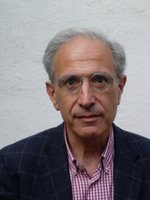Earth hour
It all started with a question: How can we inspire people to take action on climate change?
This was the answer: Ask the people of Sydney to turn off their lights for one hour.
On 31st March 2007 at 7.30pm the citizens of Sydney (Australia) switched off their electricity for one hour to show that they cared about global warming. Other communities in other parts of Australia and across the world did the same thing at the same time as a show of solidarity.
In Sydney, 2.2 million people and 2,100 Sydney businesses turned off their lights for Earth Hour. This collective effort reduced Sydney's energy consumption by 10.2% for this one hour, which is the equivalent effect of taking 48,000 cars off the road for a year. Sydney icons like the Harbour Bridge and Opera House turned their lights off, and people undertook some quite imaginative events in the dark.
What people did during Earth Hour: When the lights went down in Sydney for Earth Hour, the best place to be was with friends and family, or at a celebration that you or somebody else organised specially.
These were all suggested: Get your neighbours together for a BBQ or head out to your local park for the hour. Take some binoculars and look at the stars. Or just go for a stroll. Talk with your family and friends about the state of our planet and the need to make a change to keep the place we live the way we need it to be. Do something non-electric as a family – have a picnic or a have a candlelit dinner – but most importantly enjoy!
And these were some of the events that people actually organised:
• a wedding by candlelight
• a beach performance of mainly environmental songs by The Ramblers
• celebrating a move to a new house with a housewarming party in the dark
• a barbeque by candlelight
• stargazing
• yoga by candlelight
• a torchlit treasure hunt
• speed dating by candlelight (romantic and you don’t get too good a view of your partner)
• Scrabble by candlelight
• a neighbourly moonlit stroll
Earth Hour 2007 was a Sydney event. Earth Hour 2008 will be a global event. It will take place on March 29th at 8.00pm. So far 112,409 people and 7,104 businesses have signed up to do something (as of 13th March), and more are signing up every hour.
On the website, you can sign up, and you can then send this to others to alert them to Earth Hour...
Hey, I just signed up to the new Earth Hour website for 2008 and I thought you might like to take a look and possibly sign up too. Earth Hour is on 29 March 2008 at 8pm, and it looks like it's going to be really big. So far, as well as Sydney, there'll also be Chicago, Tel Aviv, Manila, Copenhagen, Melbourne, Brisbane and Toronto all turning off their lights for an hour in the name of fighting global warming. And I'm sure there'll be more cities by March. Sign up for Earth Hour with me by visiting www.earthhour.org/sign-up and join the movement.
www.earthhour.org
Remember too that 20th March 2008 (Spring solstice in the Northern hemisphere) is International Earth Day. This is a day to pledge to live on the planet as a responsible citizen and to do what we can to make it better for everyone: www.earthsite.org
There is another Earth Day on 22nd April 2008: www.earthday.net/earthday2008.aspx
Find out why there are two Earth Days at: www.earthsite.org
Celebrate both!

